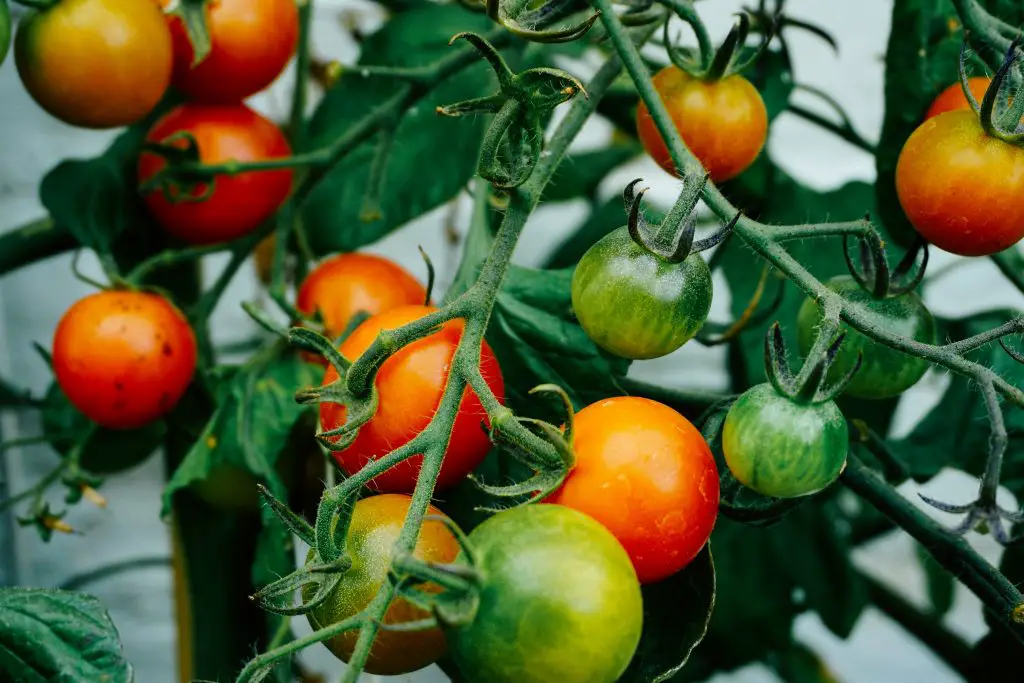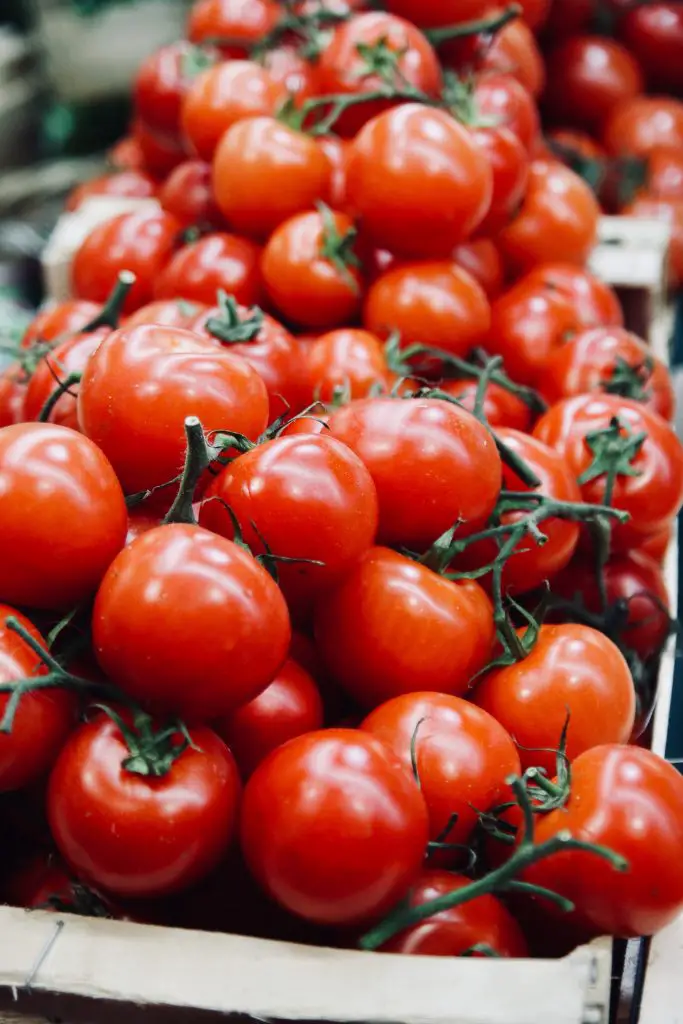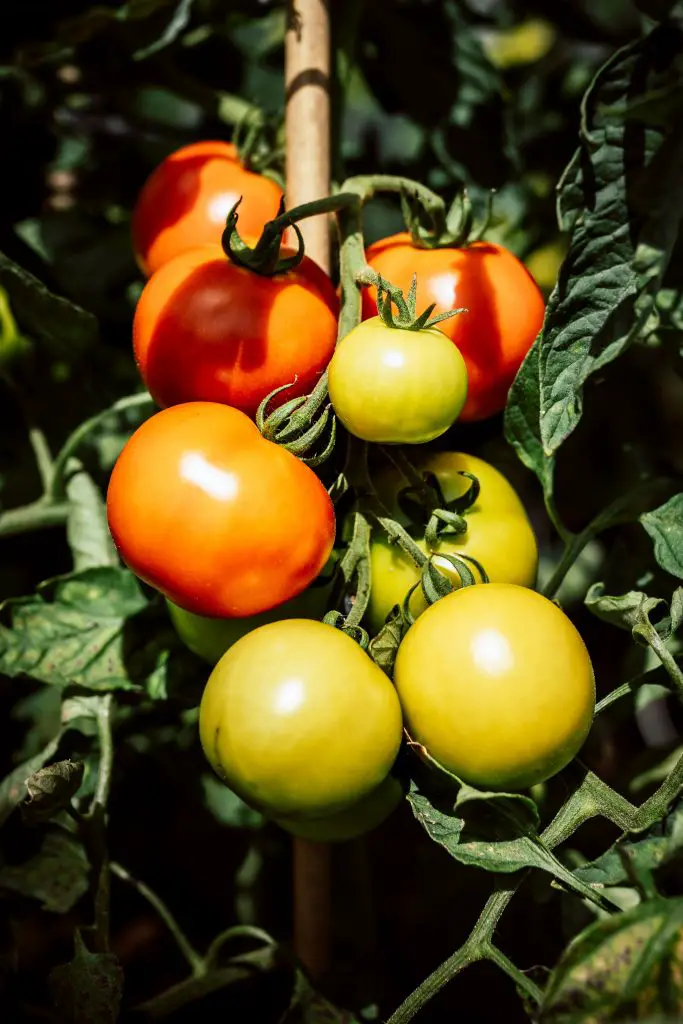Can You Plant Seeds From A Store Bought Tomato? Tomatoes are one of the most widely grown vegetables by gardeners and it is often the vegetable that most beginner gardeners start off with. However, do you need to purchase a packet of tomato seeds or can you just use the seeds from inside store-bought fruit?
The seeds from the store brought tomatoes can be successfully used to grow a tomato plant irrespective of whether it is a regular slicing tomato, a roma tomato, or cherry tomato. A single tomato is capable of producing dozens of plants with its seed and they will germinate readily in the right conditions as most people with a compost heap will know. However, there are some disadvantages to using seeds from store-bought tomatoes.
The main disadvantage with the larger slicing tomatoes is that they don’t taste as sweet as many of the traditional heirloom varieties as they are primarily bred to create a uniform blemish-free appearance. A recent study found that the selection and hybridization of tomatoes to create this performance had the unintended consequence of affecting some of the genes within the tomato responsible for sugar production.
However, the cherry tomatoes and mini Roma tomatoes sold commercially are much sweeter and do not seems to have the same issue. As such I would be personally inclined to purchase a punnet of mixed cherry tomatoes as they are likely to produce sweeter fruit. Additionally, there are few different varieties that will hopefully increase your chances of success.

The other issue is that tomatoes grown commercially are almost exclusively grown from hybrid seeds, as discussed above, which means that the tomatoes from the plant you grow will not necessarily be the same as the store-bought tomatoes the seed came from.
Hybrid seeds are produced by the cross-pollination of two different cultivars to produce a plant with desirable characteristics for production in the first year. However, as the cross has been done only one generation prior, the seeds being produced in the cross are genetically unstable. In the subsequent generation, the seeds will hybridize further with other plants around them to produce more variations. To read more about hybrid seeds click here.
Statically less than 5% of the seeds in the fruit you have purchased will produce genetically similar fruit to its parent, so there is some degree of pot luck associated with the tomatoes that you will produce from store-bought fruit. However, I have produced tomatoes via the method in the past with acceptable results.
How Many Tomatoes Will You Produce Per Plant?
The amount of tomatoes that you can reasonably expect to get from a plant is typically anywhere between 10 and 20lbs (5 to 10kg) in most cases, however, some varieties have been known to produce are much as 40lbs (20kg). The factors that can affect the level of production are the specific variety and whether it is a determinate and indeterminate variety (sometimes referred to as a bush or climbing variety).
Additionally, the specific climatic conditions can also substantially affect the volume of fruit produced. Those regions with cooler summer conditions like the UK or shorter growing seasons will produce significantly less usable fruit. However, the good news is that many of the green tomatoes produced at the end of the season can be ripened indoors or used in recipes such as green tomato relish. To read more about this click here.

Will The Seeds Grow If They Are Taken Straight From The Fruit And Planted?
Seeds in the store brought tomatoes can be taken directly from the fruit without cleaning or drying them and they will germinate in the right conditions. The evidence for this is something that I have seen with my own homemade compost. The compost, which contains scraps of tomatoes, produces large amounts of seedlings whether I want them or not.
The seedlings most commonly pop up in spring when the weather is warming up, so if you have a compost heap that is starting to produce tomato seedlings you can simply replant them instead using the seeds. The only downside of this is that it is impossible to tell what type of tomato is coming up as they all pretty much look the same as seedlings.
However, if it is necessary to collect seeds for sowing my preference is to clean the seeds to remove the pulp, as I suspect that the rate of germination is faster. The easiest way to collect the seeds is to scoop them out using a spoon and transferred them into a flour sieve. The seeds can then be washed with water to remove the gelatinous pulp.
If you are not planning to plant the seeds straight away they can be placed on a paper towel to dry. It is common for the tomato seeds to stick to the paper towel when dry. This is not a problem as the seeds can be planted with the towel attached and they will grow fine.
How To Grow Tomatoes
Tomatoes plants are relatively easy to grow, however, they do require some maintenance to keep the plant tidy and maximize the yield. Tomatoes prefer a warm climate and are sensitive to frost, which means that most gardeners start the plant off in spring after the last frost.
The seeds can be planted directly into the garden however, most people tend to plant seeds into trays for a couple of reasons. The first reason is that it allows the gardeners to more easily control the growing conditions. The other main reason is that the seeds can be started off earlier in the season.
This can be important if you live in a region where the growing season is relatively short. In these cooler climates, it can make a significant difference to the volume of fruit that you get, as most tomatoes take a while to get going and the volume of fruits can be initially quite small. I personally recommend that you use seed trays where ever you live.

Planting Tomato Seeds
The ideal time to sow seeds, if the seed tray is being kept indoors, is around 4 to 6 weeks prior to the last frost. When planting tomato seeds in trays start by filling the seeds with seed-raising mixture which can be purchased at your local garden center or online at Amazon.
While garden soil can be used for germinating seeds I generally recommend seed raising mixture as it is sterile and does not contain weeds seeds that can compete with the tomatoes. The seeds should be planted at a depth of approximately 0.5 inches (1 cm) with one seed per cell.
When determining the number of seeds to plant is best to plant approximately 50% more seeds than you actually want. The reason for this is it will ensure that you end up with the desired number of plants in the garden as sometimes the seeds don’t germinate or young seedlings are destroyed by slugs and snails when they go outside.
Once the seed is planted the soil needs to remain moist. The seedling will emerge after 7 to 10 days and usually will need to spend a total of 6 weeks in the seed trays before being planted outside. To maximize growth, particularly in really cold locations, I highly recommend using a heated propagation tray as they provide the ideal growing conditions for germinating seedlings and they are not overly expensive to purchase.
The one we recommend is the iPower Heating Seed Starter Germination Kit, shown in the picture below largely because it has a vented humidity dome and is relatively inexpensive. Click on the link to see the current price on Amazon.

Planting Seedlings Out Into The Garden
Once the seedlings are around six weeks old and approximately 4 inches tall they should be planted out into the garden at a spacing of 1.5 to 2 ft apart. The locations selected should be warm and sunny and have rich moist soil that is free draining. If your soil is lacking nutrients it is advisable to add a bag of compost to the soil.
If the weather is still relatively cold, and you want fast growth it is advisable to cover the plant with a cloche or row cover. Cloches can be made using a 2 or 3 Litre plastic milk carton by removing the base of the carton with a knife, however, as they are relatively short the length of time that the plant can be grown in them is quite limited.
However, if you live in a cooler region it is worth purchasing a row cover that is taller as it will allow it to be left on longer. The product we recommend is the Growsun Garden Tunnel Plant Cover because it is relatively tall and has hoops that can be anchored deeply into the ground which allows it to resist wind. The product is shown in the image below.

Caring For Tomatoes
The tomato plant will need to be supported once it reaches around 1 ft in height. This is traditionally done using a single tomato stake, however, I generally find that using a single stake is often not sufficient. I prefer to use a lattice structure or a tomato cage as it provides multiple points that the plant can be tied to which is important as the tomatoes plants often produce multiple stems.
To avoid the plant from becoming a tangled mess it is necessary to limit the number of stems to 1 to 3 by pinching out the side shoots regularly. Side shoots are the shoots that come off the main stem at an angle 45 degrees between the main stem and an existing branch. To read more about controlling tomato plants click here.
The tomatoes will start to produce small yellow flowers after a few weeks which will be shortly followed by small green fruit. These fruits will increase in size and then begin to change color, at which point they are ready to pick.
The tomato will continue to produce fruit throughout the season until the frost arrives. To increase the volume of ripe fruit that can be harvested it is advisable to remove the top of the plant around 4 weeks prior to the arrival of the first frost.
Removing the top of the plant will encourage the plant to concentrate its energies on ripening the existing fruit. Once the frost strikes it is advisable to uproot the plant and remove all the green fruit from the plant. The fruit should then be placed in a sunny location to ripen indoors. In some cases, the tomatoes will not ripen which means that they are only suitable for frying or using in relishes and chutneys.
Related Articles
Are Grafted Tomatoes Really Worth The Money?
What is the Difference between a Determinate or Indeterminate Tomato?
Do You Need To Prune Indeterminate Tomatoes?
How Many Tomatoes Can You Get From One Plant?
Why Do Cherry Tomatoes Taste Better Than Regular Tomatoes?
How Can You Tell If A Tomato Flower Is Male Or Female? And How To Hand Pollinate Them.
Is It Too Late To Plant Tomatoes? And How To Make The Most Of Summer
